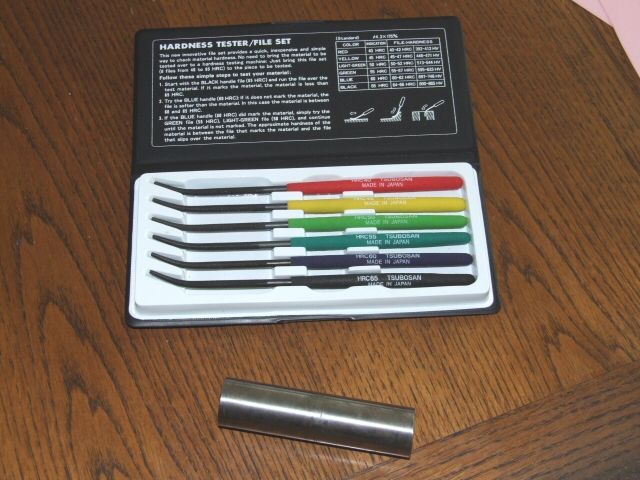Hopper, as you rightly infer there are as many shades of cherry in the basket as there are cherries! Knowing which one to pick is another matter 
As Dave says there is skill and judgement required but it's not a difficult process in the home workshop. The main thing to be aware of is overheating the part. If it's felt taht is the case just let it cool slightly before plunging into the oil bath. Simply dropping parts in is not a good idea as if the part is thin and goes in at even a slight angle to the surface of the oil distortion usually occurs.
I've said on many occasions I still get a buzz out of making a cutting tool and seeing it work as hoped for.
Like most I use silver steel and for most small cutters never bother to temper so as to have maximum hardness. Though it is intended as water hardening steel I always quench in oil basing this on an experience at work. At one time we produced a largish (for us) batch of small 12 mm diameter 'cams' with a 4 mm hex socket broached in one end. Quenched to manufacturer recommendations a very high percentage of them cracked on use around the hex socket.
The new batch were quenched in oil with a 100% success rate. Since then I have always quenched in oil for that reason. Yes the resultant hardness factor is not quite the same but it has always proved more than enough to do the job in hand. It has to be said that usually said tools are only for the one job so the risk of cracking is outweighed by the hardness of the cutting edge – for me. Were it to be something intended for long time use then it would get tempered.
Besides that occurance with Silver Steel, in the many thousands of tool steel parts heat treated over several years I only witnessed cracking of one batch of components. Because that was only one of the four batches out of the oven treated it was quickly realised that this was the first batch quenched into oil that was at ambient temperature. It had been a very cold night and though a modern factory the oil temp was well below what it would have been normally. From that point on a cube of steel was heated at the same time and dropped ito the oil to take the chill off before that first batch went in. Obviously that oil increased in temperature as each batch was done but no variation in hardness was experienced as a result.
Most, though not all of our steels but including silver steel came from Uddeholm and all our heat treatment followed their procedures as closely as possible. Heat treatment was a regular occurence in the machine shop that I ran not so much daily but certainly weekly – along time ago now but still quite fresh in my minds eye 
Happy days – certainly miss the grinding facilities!
Tug
Anonymous.





